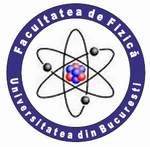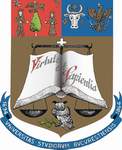| |
 |
UNIVERSITY OF BUCHAREST
FACULTY OF PHYSICS Guest
2025-10-05 22:45 |
 |
|
|
|
Conference: Bucharest University Faculty of Physics 2025 Meeting
Section: Physics Education
Title:
Study of the Gravitational Pendulum Using the GeoGebra Interactive Book
Authors:
Anda CIOBANU(1), Lorena SOLVANG(2), Cristina MIRON(3), Valentin BARNA(3), Catalin BERLIC(3)
Affiliation:
) "Alexandru Lahovari" National College, 19 General Praporgescu Street, 240192 Ramnicu Valcea, Romania
2) Faculty of Health, Science and Technology, Department of Engineering and Physics, Karlstad University, Sweden
3) University of Bucharest, Faculty of Physics, 405 Atomistilor Street, 077125, Magurele, Romania
E-mail
cmiron_2001@yahoo.com
Keywords:
GeoGebra interactive book, gravitational pendulum, computational tool, modeling physical phenomena
Abstract:
Teaching and learning physics is a complex and dynamic process that aims, in addition to understanding and explaining natural phenomena, to form skills and develop students' scientific thinking. From a didactic point of view, teaching physics requires an understanding of students’ cognitive development level, as well as the adaptation of language, learning pace, and tasks according to their characteristics, with the goal of stimulating motivation for learning and increasing their autonomy. The use of computational tools for modeling physical phenomena, simulating means, and processing data has become a necessity in supporting the exploration, analysis, and understanding of complex concepts. This work illustrates the potential of GeoGebra software in building content and activities dedicated to the study of the gravitational pendulum. The interactive GeoGebra book, accessible online, allows progressive learning and is adapted to different levels of study. At the middle school level, simple activities are proposed to explore oscillatory motion and understand its characteristics. The GeoGebra book combines theoretical aspects with interactive simulations, includes experimental activities, offers possibilities for automatic data processing, as well as tools for self-assessment of knowledge, providing a modern and efficient framework for learning physics. At the high school level, the material supports the analysis of forces acting on the pendulum and the study of the conservation of mechanical energy. In the advanced sections, isochronous oscillations and the behavior of the pendulum for large angles of deflection are addressed.
|
|
|
|